Yaling Pan
Robot Person Following Under Partial Occlusion
Feb 27, 2023



Abstract:Robot person following (RPF) is a capability that supports many useful human-robot-interaction (HRI) applications. However, existing solutions to person following often assume full observation of the tracked person. As a consequence, they cannot track the person reliably under partial occlusion where the assumption of full observation is not satisfied. In this paper, we focus on the problem of robot person following under partial occlusion caused by a limited field of view of a monocular camera. Based on the key insight that it is possible to locate the target person when one or more of his/her joints are visible, we propose a method in which each visible joint contributes a location estimate of the followed person. Experiments on a public person-following dataset show that, even under partial occlusion, the proposed method can still locate the person more reliably than the existing SOTA methods. As well, the application of our method is demonstrated in real experiments on a mobile robot.
Following Closely: A Robust Monocular Person Following System for Mobile Robot
Apr 25, 2022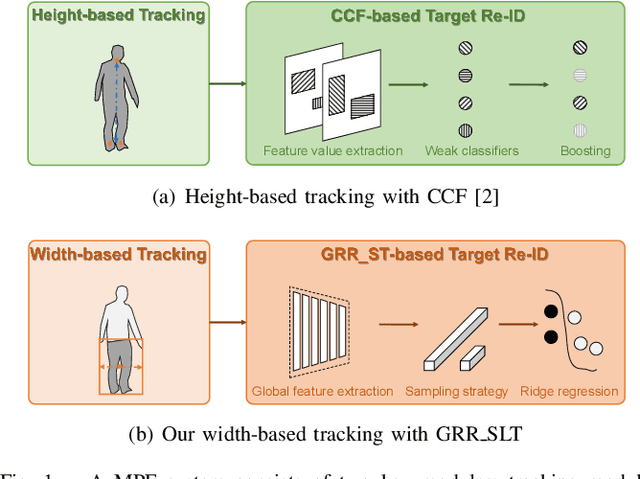

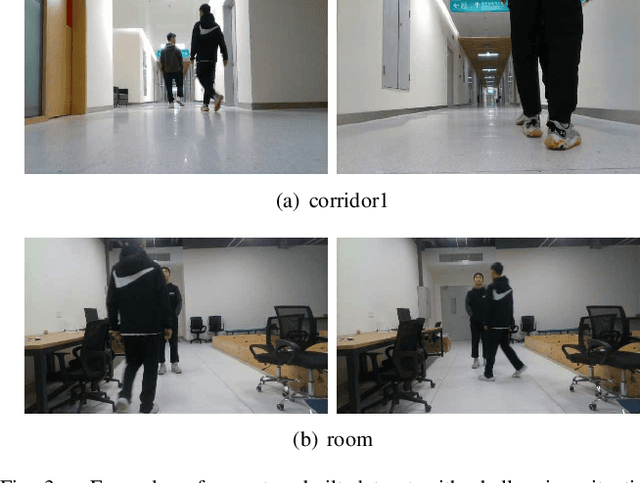
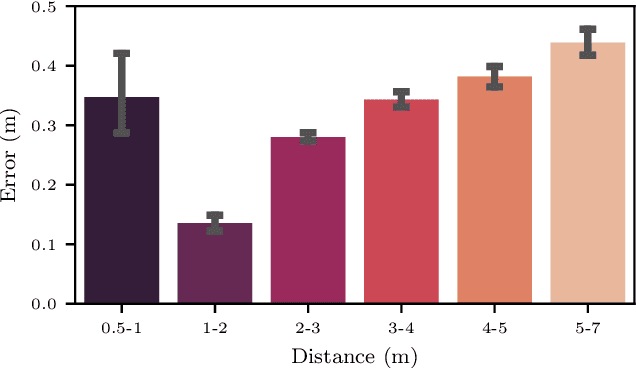
Abstract:Monocular person following (MPF) is a capability that supports many useful applications of a mobile robot. However, existing MPF solutions are not completely satisfactory. Firstly, they often fail to track the target at a close distance either because they are based on a visual servo or they need the observation of the full body by the robot. Secondly, their target Re-IDentification (Re-ID) abilities are weak in cases of target appearance change and highly similar appearance of distracting people. To remove the assumption of full-body observation, we propose a width-based tracking module, which relies on the target width, which can be observed even at a close distance. For handling issues related to appearance variation, we use a global CNN (convolutional neural network) descriptor to represent the target and a ridge regression model to learn a target appearance model online. We adopt a sampling strategy for online classifier learning, in which both long-term and short-term samples are involved. We evaluate our method in two datasets including a public person following dataset and a custom-built one with challenging target appearance and target distance. Our method achieves state-of-the-art (SOTA) results on both datasets. For the benefit of the community, we make public the dataset and the source code.
Combining Visible Light and Infrared Imaging for Efficient Detection of Respiratory Infections such as COVID-19 on Portable Device
Apr 15, 2020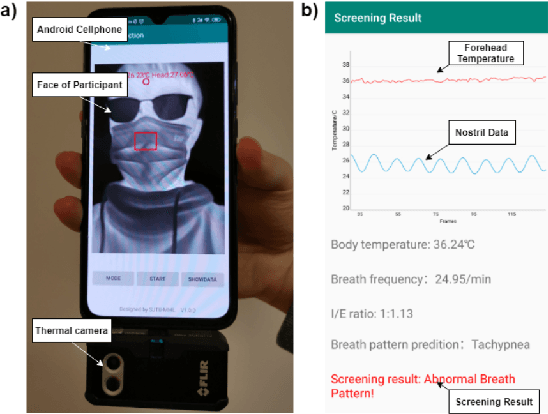


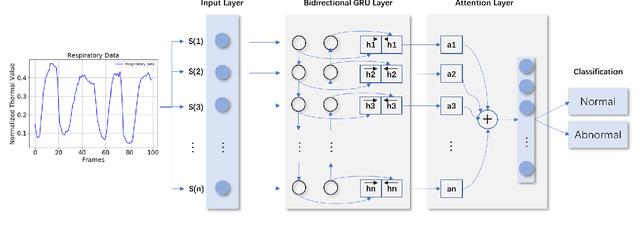
Abstract:Coronavirus Disease 2019 (COVID-19) has become a serious global epidemic in the past few months and caused huge loss to human society worldwide. For such a large-scale epidemic, early detection and isolation of potential virus carriers is essential to curb the spread of the epidemic. Recent studies have shown that one important feature of COVID-19 is the abnormal respiratory status caused by viral infections. During the epidemic, many people tend to wear masks to reduce the risk of getting sick. Therefore, in this paper, we propose a portable non-contact method to screen the health condition of people wearing masks through analysis of the respiratory characteristics. The device mainly consists of a FLIR one thermal camera and an Android phone. This may help identify those potential patients of COVID-19 under practical scenarios such as pre-inspection in schools and hospitals. In this work, we perform the health screening through the combination of the RGB and thermal videos obtained from the dual-mode camera and deep learning architecture.We first accomplish a respiratory data capture technique for people wearing masks by using face recognition. Then, a bidirectional GRU neural network with attention mechanism is applied to the respiratory data to obtain the health screening result. The results of validation experiments show that our model can identify the health status on respiratory with the accuracy of 83.7\% on the real-world dataset. The abnormal respiratory data and part of normal respiratory data are collected from Ruijin Hospital Affiliated to The Shanghai Jiao Tong University Medical School. Other normal respiratory data are obtained from healthy people around our researchers. This work demonstrates that the proposed portable and intelligent health screening device can be used as a pre-scan method for respiratory infections, which may help fight the current COVID-19 epidemic.
 Add to Chrome
Add to Chrome Add to Firefox
Add to Firefox Add to Edge
Add to Edge